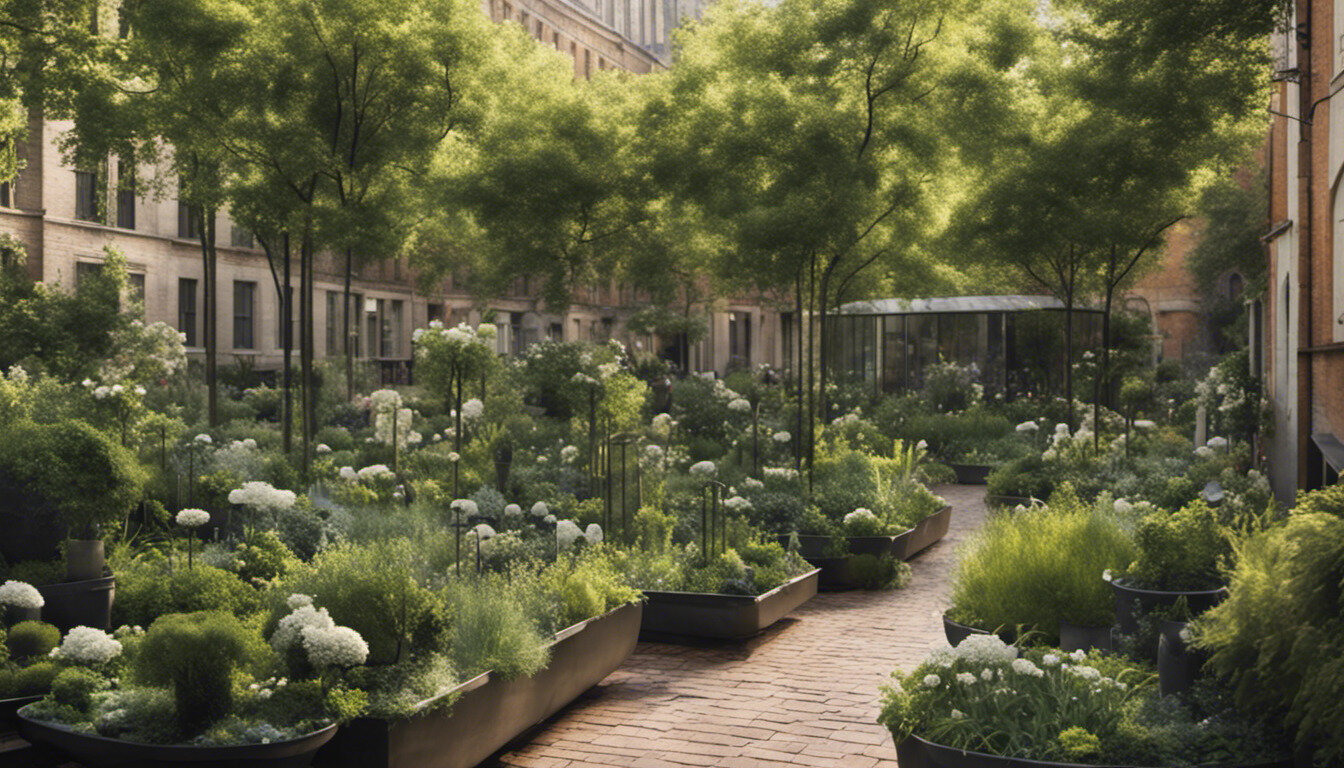Some Known Details About City Blooming
Some Known Details About City Blooming
Blog Article
The smart Trick of City Blooming That Nobody is Discussing
Table of ContentsEverything about City BloomingThe Definitive Guide for City BloomingCity Blooming Can Be Fun For AnyoneCity Blooming for BeginnersOur City Blooming PDFs
Intrigued in expanding food up for sale in the City of Chicago? Considering beginning a neighborhood yard? Modifications to the Chicago Zoning Regulation allow farming usages like area gardens and city ranches in many parts of the city. Below is a checklist of regularly asked inquiries pertaining to the rules and guidelines that growers should think about when preparing an urban agriculture project.
The zoning modification does not customize any kind of other codes handling composting, structure authorizations, buying or leasing City owned home, company licenses or ecological contamination. There are existing codes that manage these issues and they remain in full impact and might apply to your job. Neighborhood gardens are normally owned or handled by public entities, civic companies or community-based organizations and preserved by volunteers.
Urban ranches grow food that is meant to be offered, either on a not-for-profit or for-profit basis. As a result of their commercial objective, metropolitan ranches require a service permit. Yes. An area yard is permitted to market excess generate that was grown on site if the sales are accessory or secondary to the garden's key purpose explained over.
Not known Details About City Blooming
The quantity of garden compost material can not surpass 25 cubic lawns at any type of provided time according to the standards in 7-28-715 of the City's Municipal Code. Because the soil at many new garden websites requires modifying, garden compost, soil, timber chips, or various other products can be obtained to create or enhance the expanding area.

If a structure authorization is called for after that the hoophouse will certainly be taken into consideration an accessory structure. You can learn even more about the building authorization demands by contacting the Division of Structures. The 25,000-square-foot size limit is intended to stop a single neighborhood yard from controling a provided block or interfering with the block's existing household or commercial personality.
The restriction does not relate to gardens situated in Public Open Room (POS) districts. Can there be greater than one area garden that is 25,000 square feet on a single block? Yes. The dimension limit relates to specific gardens, not to specific blocks. No. Fence is not called for, however, gardens that have huge vehicle parking locations may be called for to set up fencing or various other landscaping attributes.
The Of City Blooming
B1 & B2 districts require that all commercial use activities be conducted inside your home. R districts limit industrial task. The laws reflect the function and intent of the Zoning Code. Is secure fencing needed for city ranches? Yes. Fencings may be called for, in addition to landscaping and testing, for sure parking locations and exterior job or storage space areas relying on area and the particular task occurring.
Yes. Urban ranches need structure permits and zoning approvals before building. Other types of city evaluation might be called for depending on particular frameworks, tasks, size, landscape design, licensing, public heath garden care and stormwater management concerns. Most of these demands are determined in the project design or allowing process, however, the candidate might be responsible to individually identify specific licenses or allows that may be needed.
The Division of Service Matters and Consumer Protection can aid figure out the certain type of company permit that's called for. Off road auto parking is required for most commercial tasks in Chicago. The needed number of car park rooms is based on the number of employees functioning on website and not the square video of the expanding room.
The 20-Second Trick For City Blooming

Yes. A city ranch can market garden compost material produced on website, nonetheless, the operation needs to abide by the guidelines in 7-28-715 of the Chicago Municipal Code. Yes. Aquaponic systems are allowed inside on urban ranches in many zoning districts. However, a zoning evaluation and building authorization is needed in order to install structures or systems and a business certificate is needed as defined over.
Up to five hives or colonies of honey bees might be kept as an accessory use. Beekeepers have to register with the Illinois Department of Agriculture. To find out more regarding the proposed zoning modification you may contact the Department of Housing and Economic Growth, Bureau of Preparation and Zoning at 312.744.8563.
, which takes location in rural areas at the side of suburban areas.
The 7-Minute Rule for City Blooming
, that look for to develop social networks founded on a common principles of nature and area holism. These networks can create by way of official institutional support, coming to be incorporated into regional community planning as a "change community" motion for lasting metropolitan growth.
Some of the initial proof of city agriculture comes from Mesopotamia.
Report this page